Suhru Blog
July Wine of the Month: Ember
 Summer months call for crisp, bright, refreshing white wines during the day and bold, rich, full-bodied reds to pair with BBQ or sip around the fire at night. Our Ember is just such a wine, crafted with summer evenings around the bonfire in mind!
Summer months call for crisp, bright, refreshing white wines during the day and bold, rich, full-bodied reds to pair with BBQ or sip around the fire at night. Our Ember is just such a wine, crafted with summer evenings around the bonfire in mind!
As soon as June turns to July I find myself reaching for a bottle of Ember again and again. This delicious Bordeaux Blend comprised of the five main Bordeaux red varieties—Merlot, Cabernet Sauvignon, Cabernet Franc, Malbec, and Petit Verdot—has rich red and black fruit notes, mellow tannins and a rich, round finish with just a hint of oak! Pair it with a July 4th or summer BBQ and you can't go wrong!
A Note from Winemaker Russell Hearn
The beauty of red wine blends is that irregardless of the vintage a winemaker can adjust the blend to stylize a very similar wine year over year which still showcasing the best of that vinatge. In warm years you are able to use larger percentages of the later ripening varieties (Cabernet Sauvignon and Petit Verdot) with the reverse in cooler years, focusing on larger percentages of Merlot, Malbec and Cabernet Franc. This adjustment from year to year allows us to ensure we produce a perfectly balanced wine from the first wine that hints your toungue through the mid palate and onto the finish. With our blend as well as with all of our wines, I aim to ensure that we are always showcase fruit expression while maintaining a balance of tannin throughout the wine.
A Closer Look at Suhru Ember
This classic Bordeaux blend has notes of cranberry, cassis, mixed spice and thyme on the nose giving way to red fruit notes on the mid-palate with hints of raspberry, dark cherry and cranberry with hints of vanilla. Soft mellow tannins with a medium full bodied finish. The blend is comprised of 49% Merlot, 25% Cabernet Sauvignon, 18% Cabernet Franc, 4% Malbec, and 4% Petit Verdot and aged for 12 months in Hungarian oak. The five different varietals were each fermented in open top tanks and punched down during their time on skins. The goal is to extract color and tannin without remaining too long (14 – 18 days) on skins before pressing to retain the vibrant fruit notes.
Want to Learn more about this wine? Checkout our 2018 Ember!
How White Wine is Made
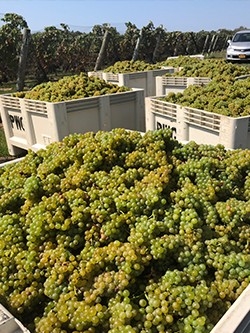 If you have spent much time on the North Fork of Long Island or in any wine country in the Fall you likely know that September and October are harvest season. Typically starting the second week of September on the North Fork the white wine grapes begin reaching optimal ripeness and harvest season begins!
If you have spent much time on the North Fork of Long Island or in any wine country in the Fall you likely know that September and October are harvest season. Typically starting the second week of September on the North Fork the white wine grapes begin reaching optimal ripeness and harvest season begins!
When the grapes have reached optimal ripeness they are harvested either by machine or by hand depending on the winemaker's preference and brought into the winery. Once they arrive at the winery, the grapes are destemmed and then loaded into the press where all of that delicious grape juice is gently extracted from the grape skins.
Fun Fact: The sugar content in a grape is measured using a system of measurement called "Brix" the higher the brix number, the more sugar in a grape.
Once the grapes have been pressed, the grape juice is pumped into a tank where it is chilled and settled. The settled juice is then racked off any remaining grape pulp and brought back up to temperature to prepare to start the fermentation process. At this point the juice is inoculated with yeast and fermentation begins.
During fermentation the yeast cells consume the naturally occurring sugars in the grape juice. As the yeast consumes the sugar it produces alcohol and releases carbon dioxide (CO2). The CO2 as it is released creates a protective barrier at the top of the tank, preventing oxygen from coming in contact with the wine. Once all of the sugars have been consumed and converted into alcohol the yeast cells die and precipitate out of the liquid, settling to the bottom of the tank. Once everything has settled, the clear wine is racked (aka transferred) off the solids (aka dead yeast cells) into a new tank where it undergoes the final finishing touches (heat stabilization, cold stabilization, filtering, etc) before it is bottled, chilled and served!
Learn More About Our White Wines
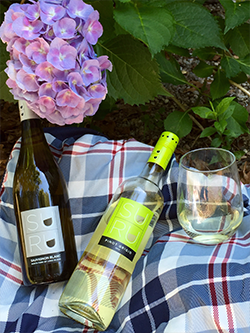 At Suhru we make a number of crisp, bright, dry white wines with each grape variety specifically selected to offer a wonderful compliment to our local cuisine. If you are looking for a big, bold white wine with lots of acidity look no further than our Pinot Grigio! Made in the Italian style, this dry white wine is crisp and refreshing making it an excellent compliment to our local seafood and a perfect wine for sitting by the pool, zipping around the bay, or lounging on the beach!
At Suhru we make a number of crisp, bright, dry white wines with each grape variety specifically selected to offer a wonderful compliment to our local cuisine. If you are looking for a big, bold white wine with lots of acidity look no further than our Pinot Grigio! Made in the Italian style, this dry white wine is crisp and refreshing making it an excellent compliment to our local seafood and a perfect wine for sitting by the pool, zipping around the bay, or lounging on the beach!
For a wine with softer flavors leaning into the minerality of the grape our Sauvignon Blanc is an excellent choice! While also an excellent accompaniment to our local seafood and all of the wonderful outdoor activities available to us here on the North Fork, one of our favorite pairings for this wine is a glass of Sauvignon Blanc and fresh local oysters! The brininess of the oysters offers the perfect balance to the soft, subtle fruit flavors and light minerality present in the glass.
Last but certainly not least is our Dry Riesling! Made using fruit grown in the Finger Lakes region of upstate New York, this fruity white wine offers a dynamic wide range of flavors. Dry Riesling is commonly referred to in the wine world as one of the most versatile food pairing wines because while it has all of the brightness and crispness of a dry white wine it also has a small amount of residual sugar that softens that bright acidity allowing it to compliment a much wider range of foods than your typical white wine. The classic pairing suggestions for Riesling are Asian dishes such as sushi and curries and while both of those are delicious we tend to gravitate towards blackened fish tacos and dry rub BBQ with this wine. It's a great wine to play around with as you'll see as you taste it, every sip holds something slightly different. Happy sipping!
Blending Trials: How Blends Are Made
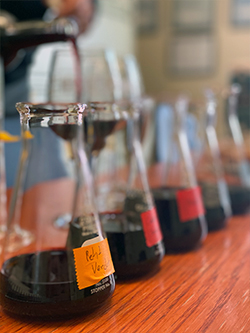
From the outside looking in, winemaking is a glamorous profession filled with days spent drinking wine, nibbling cheese, and wandering the vineyards. And while we do do all of that sometimes, the majority of a winemaker's time is spent doing the hard work. As our winemaker Russell is so fond of saying, "Winemaking is 70% sanitation, 20% perspiration (doing the sanitation), 9% inspiration, and 1% degustation but only at the end of the day!" However the exception to that is blending season!
At Suhru, one of our favorite activities (and not just because we get to sit and taste) are blending trials, which are the fascinating and often painstaking process of selecting the best expression of a wine in that particular vintage.
When you are making a blend, be it red or white, you have two main courses of action. You can either make a field blend or a traditional blend. Field blends are made up of two or more types of grapes planted alongside each other in the vineyard, brought in together at harvest, and co-fermented in the winery. The other method— which we employ at Suhru—is to make a traditional blend, harvesting, fermenting, and barrel aging each of the varietals individually allowing each to develop independently before bringing the flavors together.
Each Spring—typically in April and May—we blend our reds. The main blend that tends to take the majority of our focus is Ember, our Bordeaux style red blend. Once our winemaker has deemed the individual varietals ready, he puts together a series of blends for us as a group to blind taste. After collecting barrel samples of each of the wines—Merlot, Cabernet Franc, Cabernet Sauvignon, Malbec, and Petit Verdot—he pours them into labeled beakers and assesses them each individually for their strengths and weaknesses. It is these strengths and weaknesses that determine how the wines will be blended together. For example, if we had an early winter then the later ripening reds (think Petit Verdot) may not have developed as fully so may not have as much tannic structure in which case we will lean more heavily on the early ripening varietals (think Merlot and Malbec), and barrel influence.
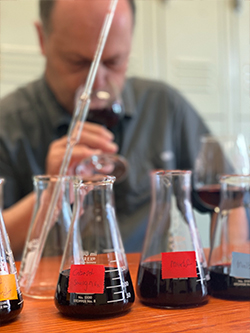
Once the wines have been assessed individually, Russell measures out samples of each variety into a graduated cylinder using a pipette. By doing this he is meticulously selecting the amount of each varietal as he blends them together into a series of different blends (typically 4-5) that best showcase the different directions we can take the wine. Of these 4-5 blends he typically makes one that he feels is the best overall expression, one that mimics as closely as possible the previous vintage and then 2-3 that fall in between those two starting points.
After all that work (by Russell) comes the fun part! We all get together and taste the blends blind so that none of us knows which wines are which. As we taste we discuss each blend, pointing out the strengths and weaknesses, what we like and dislike, providing feedback that Russell will take back to the winery with him to fine tune the blends. This is our opportunity to give any and all feedback and leave our thumbprint on the wines. We repeat this blending and tasting process as many times as necessary until we find the one that we all love and best represents the vintage, our style, and the individual varieties in the wine!
While of course important work, this is one of our favorite decisions to make and is a great way for us as a winemaking family to come together to share ideas, opinions, and shape the next vintage of Suhru Wines!
May Wine of the Month: 2017 Merlot
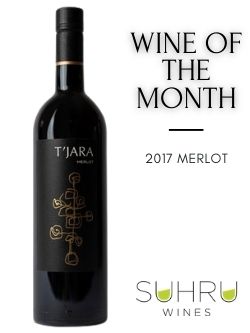
With the warm weather upon us we cannot get enough of this Merlot! While the days are getting warmer we are still enjoying cooler nights and I for one have found myself repeatedly grabbing a glass of Merlot to enjoy in the backyard by the fire. Something about the rich fruit notes and soft finish makes it the perfect compliment to the warm days turned cool nights.
Our 2017 T'Jara Merlot is fruity and luscious and everything you want in a red wine this time of year! Made in the classic old-world style, the 2017 Merlot is medium to full bodied with ripe red fruit notes of raspberry and cranberry mixed with dark notes of blueberry, blackberry and plum. Lush and round with fine tannins this easy red sipper pairs beautifully with food and stands up nicely on its own!
Keep an eye on the Blog for a few fun "Cooking with Suhru" recipes coming out soon!
Why Is Merlot So Prolific on the North Fork?
Merlot is the most widely planted variety on the East End of Long Island. This varietal flourishes in our cool climate region and ripens mid harvest, usually in the second or third week of October. Being one of the earlier ripening reds planted out here means that the fruit ripens and is harvested prior to most of the major weather events that threaten the crop, think hurricanes and early frosts.
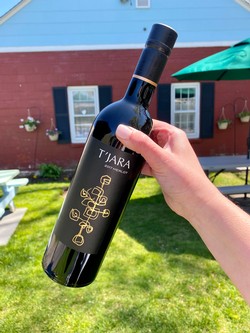 In a hotter region this variety loses its sweet fruit aromatics and mid palate fullness. Due to the hotter temperatures the fruit ripens more rapidly resulting in higher sugar content in the grapes which leads to higher alcohol in the wine which overwhelms the tannic structure of the varietal.
In a hotter region this variety loses its sweet fruit aromatics and mid palate fullness. Due to the hotter temperatures the fruit ripens more rapidly resulting in higher sugar content in the grapes which leads to higher alcohol in the wine which overwhelms the tannic structure of the varietal.
While you can grow Merlot in a variety of different regions (it is the second most widely planted grape variety on the globe), it is well established that the Bordeaux region in France is growing some of the best Merlot. If you take a closer look at the Bordeaux region, you may notice that we on Long Island are located on almost the same latitude meaning that we have a very similar climate, weather patterns, and growing conditions making us an excellent region to grow Merlot.
A Closer Look at the Vineyard
Our 2017 Merlot is made under our T'Jara label. T'Jara is the phonetic spelling of an Aboriginal word that means "place where I am from". For all of our T'Jara wines, they are grown at a dedicated vineyard in Mattituck which is located on an elevated, south facing parcel of land. This is an important feature as south facing land means that the vines get more direct sun exposure during the day leading to better grape development. In addition, the elevated nature of this piece of land in relation to the surrounding properties allows for good wind and air flow throughout the growing season.
When it comes to vineyard management air flow is key. Particularly on the North Fork where we tend to get humid and wet days during the growing season, the ample air flow ensures that the humidity does not collect around the vines which would lead to added disease pressure and rot.
In the 2017 vintage, we saw a warm growing season with a very dry Harvest period, which is what you want in the vineyard. Grape vines are one of the few crops that like a little drought pressure. Grape vines like well drained soil so for a grape grower, a dry spell is ideal because we can turn on our irrigation and control the amount of water the vines receive. In addition to the daytime weather, in 2017 the Fall evenings in the weeks leading up to harvesting in early October saw lower than normal temperatures which allowed for
longer 'hang time' on the vine before picking which resulted in the very expressive fruitiness of this wine.
Want to learn more about this vintage? Checkout our 2017 Merlot!
How Rosé Wine is Made
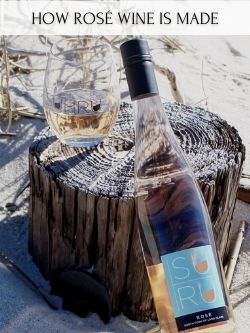
Ever wonder how rosé is made? If you are familiar with the winemaking process you likely know that when a grape reaches optimal ripeness (desired amount of sugar aka brix balancing the desired amount of acidity) the fruit is harvested and brought to the winery to begin its fermentation process.
Winemaking is both a science and an art so every winemaker will do things slightly different, however here at Suhru we are taking the Provence winemaking approach to our rosé focusing on light, fresh, fruit flavors and a light salmon hue.
To achieve this style, we purposely harvest our fruit a full 2-3 weeks earlier than we would for our red wines to ensure higher acidity in the grape. Once the fruit arrives at the winery, it is destemmed and crushed. During the crushing process the berries are split open allowing the juice to run free and be in contact with the exterior of the grape skins which is essential for color extraction. This crushed fruit is left to soak for 6 hours of skin contact which allows it to extract a nice fruitiness and light salmon hue without the body, weight, or tannin, that an extended extraction (what we typically do for red wines) would result in.
Once the 6 hour soak is complete, the fruit is loaded into the press where we gently extract the liquid juice from the grape skins and seeds before the juice is pumped into tank. At this point the juice is inoculated with yeast and begins its fermentation process.
During fermentation the yeast cells that we have introduced through inoculation begin to consume the naturally occurring sugars in the grape juice. As the yeast consumes the sugar it produces alcohol and releases carbon dioxide (CO2). Once all of the sugars have been consumed and converted into alcohol the yeast cells die and settle to the bottom of the tank. Once everything settles the clear wine is racked (aka transferred) off the solids into a new tank where it undergoes the final finishing touches (heat stabilization, cold stabilization, filtering, etc) before it is bottled, chilled and served!
New Release: 2020 Pinot Grigio
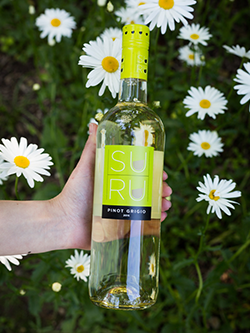 We are thrilled to announce the release of our 2020 Pinot Grigio, which recently won Gold at the 2021 New York Wine Classic! Our signature white wine from the very beginning, we are proud to say that this particular vintage is one of our best. While 2020 was a rough year for a number of regions, it was a good year to grow white wines on the North Fork!
We are thrilled to announce the release of our 2020 Pinot Grigio, which recently won Gold at the 2021 New York Wine Classic! Our signature white wine from the very beginning, we are proud to say that this particular vintage is one of our best. While 2020 was a rough year for a number of regions, it was a good year to grow white wines on the North Fork!
A Closer Look: Behind the Bottle
After the grapes are harvested, arrive at the winery, are de-stemmed and crushed, they undergo fermentation. Once the yeast have consumed all of the naturally occurring sugars in the grape juice turning it into alcohol the yeast cells die and precipitate out of the solution, settling to the bottom of the tank. The solids at the bottom of the tank are known as the lees and are most often referred to when making sparkling wine.
For the last two years we have been using a newer winemaking technique in our white wines. Once the wines finish fermentation they are racked off the fermentation lees and these lees are put aside. The fermented wine is then filtered, heat stabilized, cold stabilized, filtered again and then the fermentation lees are reintroduced to the finished wine. The wine ages sur lie (aka on the lees) post-fermentation for 4 months. This aging process adds an extra layer of richness and complexity to the wine which is evident in the long, rich finish on the wine.
 What Made 2020 Special?
What Made 2020 Special?
2020 was an excellent year for white wines. We had slightly cooler than normal nights as well as cooler days during the harvest period which retained acidity and fruit intensity in the grapes. Because of these cooler conditions the fruit ripened a little slower but held its acidity meaning that we harvested a little later than normal leading to extended fruit development. All of these factors led to wine in the bottle which is bright and crisp with robust and nicely developed fruit flavors.
Food & Wine Pairing Suggestions
Pinot Grigio is one of those white wine varieties that pairs with a huge range of foods including cheese, seafood, chicken, pasta, and more. While there are a plethora of great options to choose from when pairing this wine, one of our all time favorite pairings is Pinot Grigio and Lobster! Nothing says "Hello Spring" like a fresh lobster and a cold glass of Pinot Grigio! No matter what you choose, here's to good food, good wine, and good company!
Learn More About our New Release—2020 Pinot Grigio
New Release: 2019 Dry Riesling

We are VERY excited to announce the release of our new Dry Riesling, a wine that is already creating waves in the wine world! Our 2019 Dry Riesling was recently awarded a Double Gold medal and a 96 point score from the 2021 International Eastern Wine Competition! Not a bad way to kick off a new vintage release!
A Closer Look: Behind the Bottle
As in years past, our 2019 Dry Riesling was made entirely in stainless steel tanks to accentuate the minerality of the wine which brings out the bright, crisp acidity on the finish. When it comes to acidity in a wine, what you taste is driven by the pH.
The More You Know: In chemistry, pH is a scale used to determine the acidity or basicity of a liquid. The higher the pH the more basic the liquid, the lower the pH the more acidic it is.
Over the last few years the pH of our Dry Riesling has sat around 3.2 with 8 g/L of residual sugar. However in the 2019 vintage we saw a more vigorous growing season with more sun days at the vineyard in the Finger Lakes where we grow our Riesling fruit. Because of this, the grapes ripened earlier than in years past resulting in riper fruit while the pH remained low—the ideal scenario when it comes to growing white wines. Therefore our 2019 Dry Riesling has a slightly higher residual sugar than years past at 9g/L to balance its lower pH of 2.8.
Why is Acidity So Important?
When it comes to taste there are five main flavor categories—salt, fat, umami, acid, and sweet. In the wine world we tend to focus on acid and sweet, pulling in the other three when we are talking about food pairings.
Acidity and sweetness fall on opposite ends of the flavor spectrum so when you have a wine with residual sugar, the lower the pH the less sweet it will taste, as the brightness of the acidity comes through as the primary flavor. This phenomena is on prime display in our 2019 Dry Riesling which jumps from the glass upon first sniff. With bold, bright aromatics this wine has rich notes of honey and apricot mingled with a slight hint of plum on the nose with crisp notes of clementine, white peach, and starfruit on the palate.
Food & Wine Pairing Suggestions
An extremely food-friendly wine, known as one of the favorite food pairing wines by sommeliers, our Dry Riesling pairs wonderfully with a variety of Asian cuisines and spicier foods such as sushi, curries, Thai foods, dry rub barbecue, and more! This wine's rich minerality, vibrant fruit notes and bright acidity will leave you craving a cheese plate and a platter of blackened fish tacos! We will be releasing more information on this wine and a number of fun food pairings over the coming weeks, so stay tuned! Can't wait for more? Checkout our recent "Cooking with Suhru: Vegetable Curry & Dry Riesling" post!
Learn More About our Dry Riesling
Wine Tasting 101
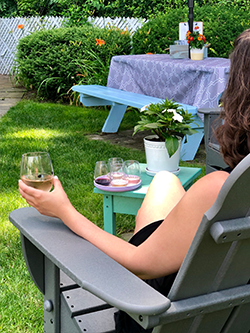 If you're planing a trip to wine country or simply tasting wines at home there are a number of helpful hints, tips, and tricks to ensure you get the most out of your tasting experience however one of our favorite (and the easiest to remember) is the 5 S's—Sight, Swirl, Sniff, Sip, Savor (or Spit, that's up to you).
If you're planing a trip to wine country or simply tasting wines at home there are a number of helpful hints, tips, and tricks to ensure you get the most out of your tasting experience however one of our favorite (and the easiest to remember) is the 5 S's—Sight, Swirl, Sniff, Sip, Savor (or Spit, that's up to you).
Sight
When it comes to tasting we all assume that our tongue is the main muscle we're flexing and while it is the main one, there is more to tasting than just "taste". Your sense of sight can tell you a lot about the wine before it even reaches your lips. Once the wine has been poured into your glass take a look at it, what do you notice? Right off the bat you should be able to tell first and foremost is it a white, red, or rosé wine? Is it still or sparkling?
Place your glass over a white surface and examine the color. Is it pale and translucent or rich and opaque? If it is a red wine, is the color consistent or do you see some browning on the edges? All of these characteristics and more will allow you to start to assess the wine in the glass, make certain observations and conclusions, and get a better sense of what the wine will taste like.
The color of a wine can tell you a lot about the wine in the glass. If a white wine is lighter in color it is likely stainless steel fermented and on the drier side whereas a honey hue in a white wine is often the sign of barrel aging or the presence of more residual sugar. If you are looking at a red wine similar observations can be made, often lighter bodied wines will be paler in color leaning more towards the red side of the color spectrum whereas fuller bodied reds with more tannic structure will be deeper and often more opaque in color.
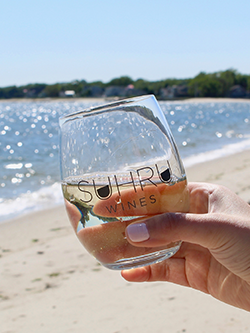 Swirl
Swirl
An often overlooked step in the tasting process, swirling a wine in your glass has several meaningful results (other than just making you look fancy!). Swirling a wine in the glass exposes it to oxygen. While we often talk about oxygen in relation to wine as a negative (think wine turning into vinegar) controlled oxidation allows the flavors and aromatics to open up. By swirling a wine in the glass you are increasing the surface area of the wine and exposing more of the wine to oxygen, similar to the process taking place when a wine is decanted. As you swirl you'll start to notice more aromatics being release.
Pro Tip: Hold your glass by the stem or bottom of the bulb (if using stemless) and slowly rotate your wrist to move the wine around the edges of the glass. The swirl is all in the wrist, people often incorporate the whole arm into this movement which can lead to wine sloshing over the rim of the glass, which no-one wants.
Sniff
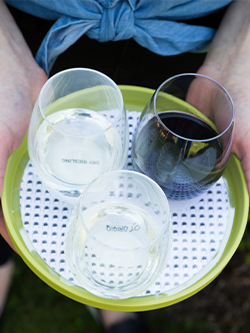 Your sense of smell and your sense of taste are very closely related, as your nose and throat connect to the same airway. Which for example, is why when you have a cold and a stuffy nose, your sense of taste is diminished. Smelling a wine in the glass is a good first step in assessing the flavor profile of the wine. Stick your nose as far into the glass as you can and take a deep inhale, what do you smell? Notice the fruit notes. In a white wine, do you notice tropical and stone fruits or more citrus? For a red wine, do you detect red (raspberry, red currant, strawberry, red cherry) fruit notes or more on the black (blueberry, plum, blackberry, dark cherry, dark currant) fruit side of things? What about oak?
Your sense of smell and your sense of taste are very closely related, as your nose and throat connect to the same airway. Which for example, is why when you have a cold and a stuffy nose, your sense of taste is diminished. Smelling a wine in the glass is a good first step in assessing the flavor profile of the wine. Stick your nose as far into the glass as you can and take a deep inhale, what do you smell? Notice the fruit notes. In a white wine, do you notice tropical and stone fruits or more citrus? For a red wine, do you detect red (raspberry, red currant, strawberry, red cherry) fruit notes or more on the black (blueberry, plum, blackberry, dark cherry, dark currant) fruit side of things? What about oak?
Pro Tip: Whenever you are tasting you want to ensure that what you are smelling is coming from the glass, not from your surrounding environment. While perfume and scented lotions are all great, it is best to skip it on days you are tasting as the aromas from the perfume will influence what you and the people around you taste in the glass.
Sip
Now its time to taste! Give the glass one more nice swirl, take a deep inhale, and take a sip. Let the wine sit on the top of your tongue, move it around your mouth making sure it comes in contact with the roof of your mouth and the sides of your tongue. What do you notice? What flavors jump out to you? Do you find yourself salivating from the acidity? Are you experiencing any drying sensations in your mouth coming from the tannins? Take another sip, this time while holding the wine in your mouth pull a small amount of air across your tongue, swish the wine around, swallow, and with your mouth closed exhale through your nose? What additional flavors do you notice?
Pro Tip: When it comes to tasting your pallet is key. Avoid gum, coffee, or strongly flavored foods prior to tasting and never brush your teeth just before a tasting as the flavors will diminish your tasting abilities.
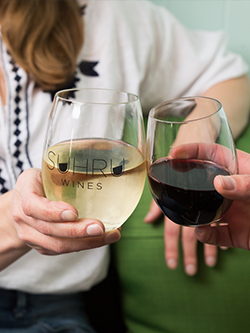 Savor (or Spit)
Savor (or Spit)
This last and final step is everyone's favorite! You have reached the main event and now can enjoy the wine in your glass without having to worry about identifying flavors or characteristics. However the fun doesn't stop here. While you have reached the end of the S's there are plenty more ways to explore the wines you have in front of your the main one being combine the tasting experience with food.
One of the things we often forget when tasting wine is how those flavors interact on the palate once additional flavors are introduced which is why it is always best to taste a wine on its own as well as with food to see how the flavors change and evolve. Taste the wine in your glass with a meal, with a cheese or charcuterie spread at the Tasting House, or simply with a cracker and see how the flavor profile changes and evolves, happy sipping!
Corks vs Screw Caps
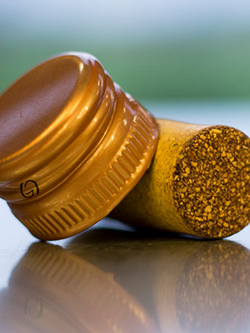 Ever wondered about the differences between the traditional cork closure and the more modern screw caps? Today we are taking a deep dive into the two technologies and shedding light on the history and benefits of the two!
Ever wondered about the differences between the traditional cork closure and the more modern screw caps? Today we are taking a deep dive into the two technologies and shedding light on the history and benefits of the two!
A Brief History of the Corks
Cork has been in use since 3000 BC and is used in a wide variety of products including shoes, flooring, bags, and of course as a closure for wine. Cork products are made by harvesting the bark of a Quercus Suber oak trees aka a Cork Oak, which takes 25 years of growth to reach maturity and to a point where the bark can be harvested. The process of harvesting is done by hand by specially trained cork harvesters who strip the bark from the trees using an axe.
As an organic material cork is a wonderful natural product, however as with any organic material it is subject to contamination. One of the reasons cork has been the material of choice for centuries is that its porous nature allows gradual oxidation for the wine as it bottle ages. However because it is a natural product there can be quite a lot of variation from cork to cork which can lead to something called sporadic oxidation.
Sporadic oxidation is the result of inconsistency in pore size of the cork, leading to the allowance of more or less oxygen to pass through the cork into the bottle. This can result in a browning in color, maderized (baked or stewed) character, loss of primary fruit and a general flattening of flavors and shortening of the finish of the wine. This comes from the varying elasticity of the corks, more or less lenticels (holes size and quantity), the internal bore of the glass neck, imperfections of the corking machinery can cause slices in the cork all of these can create variable issues with a perfect seal.
Cork Contamination aka "Corked" Wine
One of the other most commonly referred to downsides of cork closures is TCA (trichloroanisole), the primary form of wine contaminantion, also referred to as a “corked” or spoiled bottle of wine.
TCA is created when chlorine comes in contact with molds that form naturally in the bark of Quercus Suber oak trees. Chlorine is introduced during the washing of the bark when it is cut and from spray residue from pesticide sprays on the trees. Some of the tell-tale signs of a TCA contaminated or "corked" bottle of wine is a ‘wet-cardboard’ and ‘wet dog’ aromas, paired with suppressed fruit and a shortened finish. The flavor and aromas are distinct and are easy to pick-out once you know what to look for. The wine industry estimates that between 5-10% of all wine bottled under cork has some level of TCA.
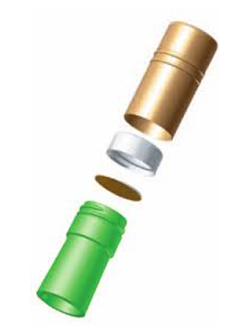 Introduction of Screw Caps
Introduction of Screw Caps
In August of 1889 Dan Rylands of Barnsley in the UK patented the screw cap, however it would be another 70 years before screw caps were used in wine packaging.
If you look inside a screw cap you will see a coating on the interior which is its PVDC liners (polyVINylidene chloride) essentially the ‘wine-proofing layer.’ This is then coupled with either Tin or Saranex backing based on the winemaker's preference. Tin linings (which are 10% more expensive) prevent oxygen exchange and retain freshness in a wine. Tin linings are primarily used for white and rosé wines. On the other hand, saranex linings which are mainly used for red wines allow the wine to breathe.
In 1959 a French company, Le Bouchage Mecanique (now Pechiney) was the first to use screw caps on a wine bottle. In the 1960's a Bordeaux winery bottled multiple vintages in screw caps as a trial to test out the new technology. Unfortunately for them they used paper wad backing not saranex in the cap. Ten years later in the early 1970's the Swiss wine industry was the first to fully embrace the new screw cap closures and by 1980's it was the predominant closure being used.
In the 1970’s Australia confirmed the superiority of the closure for red and white wines using tin or Saranex depending on the wine, but the change was met with strong consumer resistance. However in the early 2000’s the industry once again embraced this closure (starting with Claire Valley high-end Riesling producers) and over the last two decades screw caps have gained industry and consumer popularity across the globe.
Corks vs Screw Caps, Which is Better?
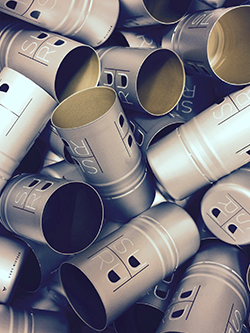 A closure has a direct impact on the quality, stability, longevity and even proper storage of the wine. While cork has been the historic choice and for a great many years was the best option available, in the modern age screw caps have become superior due to the consistency they provide.
A closure has a direct impact on the quality, stability, longevity and even proper storage of the wine. While cork has been the historic choice and for a great many years was the best option available, in the modern age screw caps have become superior due to the consistency they provide.
Screw caps offer a reliable seal that is consistent from bottle to bottle unlike cork which due to the fact that it is an organic material has slight variations from one cork to another that result in slight differences, and sometimes spoilage in the bottle.
One of the other main benefits and one that is often overlooked is that screw caps are inert, meaning they are flavorless and do not add any flavor (be it positive or negative) to the wine. On the other hand corks, introduce flavor both positive through slow oxygen exchange which allows wine to age in the bottle as well as negative (TCA) which results in spoilage. Screw caps, while inert, can be customized to allow for gradual slow oxygen exchange by adding a foam insert to the top of the screw caps interior thus mimicking the slow oxygen exchange of corks.
Temperature is often discussed as one of the main detriments to wine as it deteriorates the quality of the wine over time and causes spoilage. If you have ever opened a bottle of wine after it has sat baking in a car on a hot summers day you know what I'm talking about, the wine gets "cooked" and no longer tastes as it should. While a wine can get "cooked" no matter what closure you have, when a bottle with a traditional cork closure reaches 85 degrees Fahrenheit the cork will start pushing its way out of the top of the bottle exposing the wine to more oxygen and increasing the rate of spoilage/oxidation over time, whereas with screw caps you don’t run into this issue as the caps can hold more internal pressure and therefore are less effected by temperature swings.
Another main benefit of screw caps is their price, while pricier options do exist, there are affordable options when compared to many of their cork/capsule counterparts, meaning less packaging costs for the winery and therefore a better bottle price for the consumer, a win-win for everyone! For comparison, a natural cork costs $0.25 - $0.45 per cork plus the capsule is an additional $0.15 for polylamanents or roughly $0.02 for plastic. A stelvin screw caps costs $0.18 per cap and the higher end lux screw caps costs $0.50.
And if all of that wasn't enough to convince you that screw caps are the way of the future, one of our favorite features are how easily screw caps can be opened and resealed. No need to struggle with a corkscrew or ensure you have one on you, all you have to do is give the bottle a quick twist and your wine awaits! In addition to the ease of opening, screw caps are a green product, the are cost effective and easily recycled. Aluminum (what screw caps are made of) happens to be the most cost effective material to recycle and if that's not a plus I don’t know what is!
Suhru has been proudly packaging our wines under screw caps since we opened in 2008 and have seen great success in the age-ability of our wines under these closures. Many experiments have been done in regions across the world comparing screw caps to cork and the screw caps has come out equal if not better than the cork at aging in may cases. While it may be a "less romantic" way to open your wine, you can't beat the convenience!
Harvest Update: November 2020
Our 2020 Harvest has come to an end at Suhru. All of our grapes have been picked and are now busy fermenting into wine! While our fruit has all been picked, the work is far from done! Our white wines are completing the fermentation process while for the reds, the journey from grape juice into wine is just begining.
What's Happening in the Winery
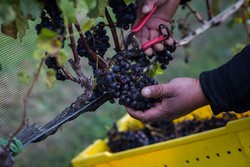
Over the last week the focus in the winery has switched over to red wines, so we thought we'd take a quick moment to briefly review how red wine is made. Once our reds have been hand-harvested and delivered by tractor to the winery the grapes are destemmed and the grape must (aka berries, juice, skins, seeds and all) are pumped into open-top tanks where the magic of fermentation occurs.
All of the tanks at the winery are temperature controlled as temperature is key during fermentation. Yeast (the essential ingredient in turning juice into wine) like very specific conditions—too warm the yeast will over heat and die, too cold the yeast will fall dormant.
When the grape must reaches 60 degrees it is time to inoculate (aka add yeast)! Throughout fermentation the yeast cells will consume the natural occurring sugars in the grape juice, producing alcohol and releasing carbon dioxide. During the ferment as CO2 is released it rises, lifting the skins to the top of the tank forming a "cap".
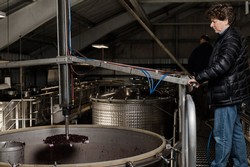 We need to ensure that the juice stays in contact with the skins throughout the fermentation process as the skins are what give red wine its color. As a result, throughout fermentation we "punch-down" the grape skin cap that forms at the surface of the tank in order to reintroduce the skins to the juice. This process will be done multiple times a day at the beginning of fermentation, gradually slowing down as the rate of fermentation slows.
We need to ensure that the juice stays in contact with the skins throughout the fermentation process as the skins are what give red wine its color. As a result, throughout fermentation we "punch-down" the grape skin cap that forms at the surface of the tank in order to reintroduce the skins to the juice. This process will be done multiple times a day at the beginning of fermentation, gradually slowing down as the rate of fermentation slows.
Once the fermentation process is complete and all of the sugars have been converted to alcohol, the the grape seeds will settle to the bottom of the tank while the grape skins float homogeneously with the wine. At this time the juice is drained off and pumped into another tank and in order to ensure we get every last drop of wine. The remaining skins are shoveled out of the tank and loaded into the press where we extract the remaining wine.
From here the wine is racked into oak barrels where it undergoes secondary fermentation or malolactic fermentation. During this second fermentation process the sharp, astringent malic acid is converted into lactic acid which gives the wine a softer, rounder mouth-feel and more pleasant drinking experience. Once this process is complete the wine is racked into clean barrels where is will stay in our temperature controlled barrel room for the coming months as it ages.
A Note from Winemaker Russell Hearn
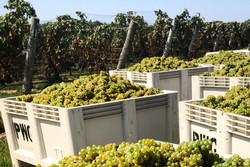 Harvest 2020 started out nicely with the white and rosé fruit ripening in a dry pleasant weather pattern. All of our white and rosé varieties came into the winery looking very nice and are now fermenting along cleanly in tank. Our Sauvignon Blanc and Pinot Grigio fruit came in looking especially nice with full fruit maturity. Our Cabernet Franc and Merlot which will be used to make our 2020 Rosé were picked during a cool spell so they both retained nice natural acidity.
Harvest 2020 started out nicely with the white and rosé fruit ripening in a dry pleasant weather pattern. All of our white and rosé varieties came into the winery looking very nice and are now fermenting along cleanly in tank. Our Sauvignon Blanc and Pinot Grigio fruit came in looking especially nice with full fruit maturity. Our Cabernet Franc and Merlot which will be used to make our 2020 Rosé were picked during a cool spell so they both retained nice natural acidity.
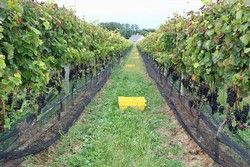 However after a beautiful summer and nice September, October has given us a run for our money! The second half of October turned wet and humid with below average temperatures so we have seen some delays in the red fruit which means that some of the red varieties out here will not be picked at the high level of quality that they otherwise could have been. Therefore, we have chosen to only make Teroldego this Harvest as it is an early ripening variety and was not as impacted by the uncharacteristic weather as the other red varieties. Our Teroldego was picked on October 26th probably 7-10 days later than normal which is one of the benefitw of it being an early ripener, even in a cooler than normal year it still ripens. The Teroldego fruit looked beautiful coming into the winery and is now busy fermenting away in tank. We look forward to seeing how this wine continues to improve and evolve throughout the fermentation process!
However after a beautiful summer and nice September, October has given us a run for our money! The second half of October turned wet and humid with below average temperatures so we have seen some delays in the red fruit which means that some of the red varieties out here will not be picked at the high level of quality that they otherwise could have been. Therefore, we have chosen to only make Teroldego this Harvest as it is an early ripening variety and was not as impacted by the uncharacteristic weather as the other red varieties. Our Teroldego was picked on October 26th probably 7-10 days later than normal which is one of the benefitw of it being an early ripener, even in a cooler than normal year it still ripens. The Teroldego fruit looked beautiful coming into the winery and is now busy fermenting away in tank. We look forward to seeing how this wine continues to improve and evolve throughout the fermentation process!
